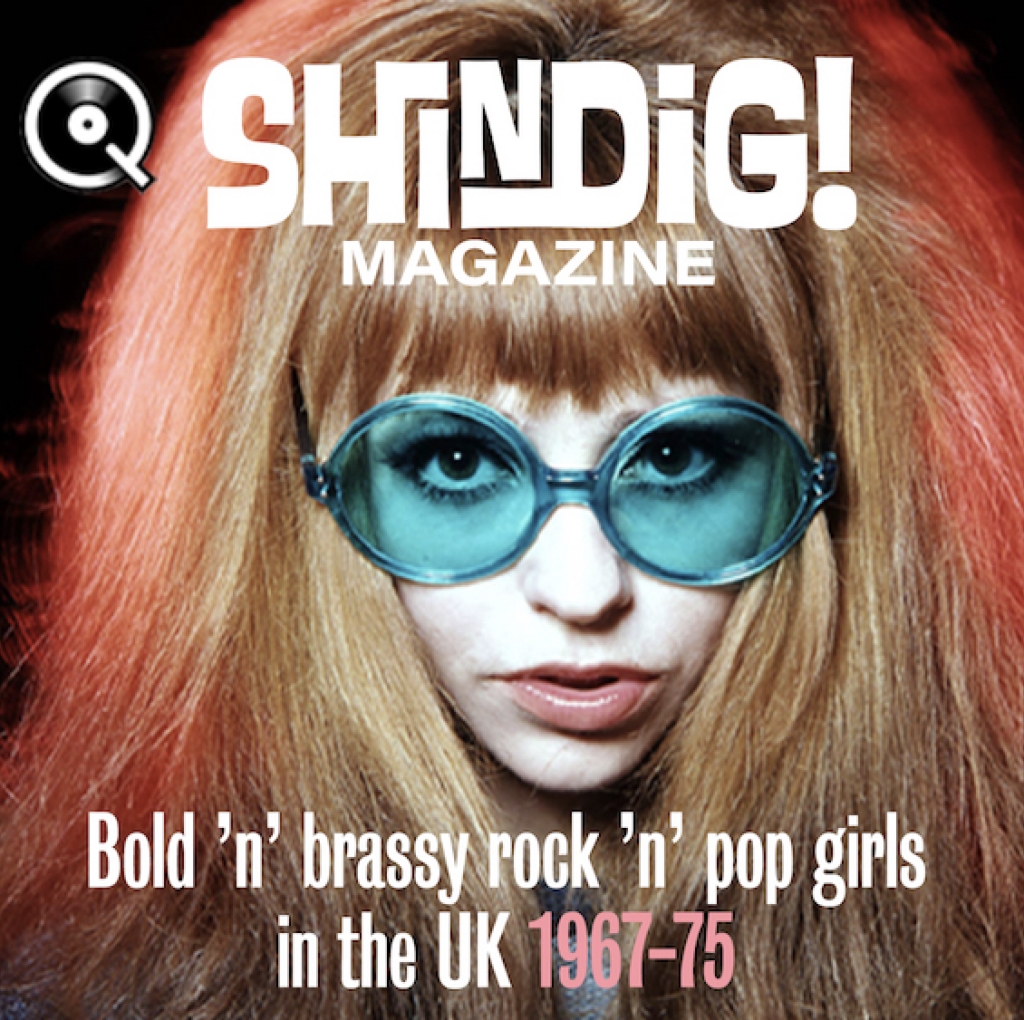Exclusive Shindig! Qobuz playlist #2: Bold ’n’ brassy rock ’n’ pop girls in the UK 1967-75
We’re very excited to be media partners with the truly unique online streaming platform and download store Qobuz. The second of our monthly bespoke playlists, which will take in all manner of genres and sub-genres, scenes and beyond, then and now, focuses on the next stage of the girl pop sound. If at first the majority of the ’60s Brit girl’ output was commercial and safe, by the later years of the decade through to the mid-70s they were well and truly tapping into the soulful zeitgeist and beyond

Play here or use the scrollable frame with tracklist the bottom of the page. You can sign up for a free trial today. Plans start from £10.83 per month. For more on Qobuz read our interview with MD Dan Mackta here
By 1967, with pop music progressing at warp speed and the UK music industry struggling to keep up, some female artists began to wield newfound power in a notoriously male-dominated environment. Things had been changing since the white bread singers of the early ’60s were wheeled out to perform their latest hit in front of an audience of middle-aged Middle-Englanders, likely to have turned up or tuned in for the ventriloquist or comedy act on a variety bill. In the wake of the enormous mid-60s success of that frontline of female British pop icons – Dusty, Cilla, Sandie, Lulu, Petula – and the empowerment and emancipation that it ushered in, dozens of female artists began singing, writing songs and forming bands. Others, of course, continued to be cherry-picked, molded and exploited by the industry—things hadn’t changed that much yet.
Take Helen Shapiro: discovered at 14, declared “Britain’s Top Female Singer” at 16, supported The Beatles on tour at 17, and all but washed up, chart-wise, at 18. Yet that first flush of success enabled her to continue recording for decades. Some of Shapiro’s most highly-regarded work – as well as that of Dusty, Cilla, Sandie, Lulu, Petula et al – was made at the end of the decade, when the esoteric and eclectic influences of rock, soul and psychedelia were taking hold. Witness our selection ‘Take Me For A While’: tucked away on a 1969 B-side, it embodies the joyful, soulful values of the best late ’60s pop and has enjoyed an afterlife as a Northern Soul go-to.
The influence of soul was all-pervading. Dusty finessed her devotion to the sound throughout the decade, with her high-octane reading of Gladys Knight & The Pips’ ‘Ain’t No Sun Since You’ve Been Gone’ opening the 1968 album Dusty… Definitely. Lulu followed Dusty to soul hotbed Atlantic Records for ’69’s New Routes, on which she offered a supremely funky take on Traffic’s ‘Feelin’ Alright’. Sandie Shaw attempted a potted history of popular music on ’69’s self-produced Reviewing The Situation. This dancefloor-friendly take on The Beatles’ debut ‘Love Me Do’ rubs shoulders with what may be the first ever Led Zeppelin cover, The Rolling Stones’ ‘Sympathy For The Devil’ (see Linda Kendrick’s wild ’74 reading here) and the title track, taken from Lionel Bart’s Oliver! soundtrack (Jacki Bond’s ’67 recording, included here, was clearly the blueprint). Billie Davis made the Top 10 with ‘Tell Him’ in ’63 but it would be seven years until her sole album landed, containing songs by Jethro Tull and The Moody Blues, as well as the irresistible bubblegum-pop of ‘I’m In Love With You’. Even Dame Shirley Bassey jumped on the rock bandwagon, cutting a seductive version of The Ides Of March’s US ’70 hit ‘Vehicle’ that went unreleased for over 20 years.
A number of artists on our playlist came to the UK from overseas. From America came PP Arnold, The Flirtations, Madeline Bell, Yvonne Elliman and Polly Niles. Arnold landed here in ’66 with The Ike & Tina Turner Revue before scoring four solo hit singles, cutting two albums and a third that went unreleased at the time, and includes her reading of Traffic’s ‘Medicated Goo’. The Flirtations settled in London in ’67 but mystifyingly failed to chart there, despite the obvious qualities of Deram singles like the propulsive ‘Keep On Searching’. Bell became an in-demand session singer in the UK (most notably with Dusty Springfield) and recorded a string of excellent singles, with ’67’s much-covered ‘Picture Me Gone’ being one of the best. Elliman appeared in Hair (hey, who didn’t?) and cut this storming version of The Who’s “I Can’t Explain” for Deep Purple’s label in ’73. Niles’s 1970 album went unreleased until 2019 and features the laconic groove of ‘Sunshine In My Rainy Day Mind’, expertly covered by UK indie darlings The Primitives in 2012. South African Sharon Tandy, the second white singer signed by Atlantic, cut a series of prized soul-rock 45s in the UK, of which ‘The Way She Looks At You’ screams hit single. It wasn’t to be.
Elsewhere we encounter future stars (Fleetwood Mac’s Christine Perfect, Dana Gillespie, Julie Covington), rock outliers (Julie Driscoll, Linda Lewis, Affinity’s Linda Hoyle), backroom alchemists (Barbara Moore), almost success stories (Truly Smith, Tina Harvey, Ayshea) and bona-fide obscurities (Bimbi Worwick, Tammy St John, Sugar Simone).
What this disparate array of talented women has in common is the big, bold and sometimes brassy music they made in the late ’60s and early ’70s, as the boundaries became blurred and the future looked bright.
© Andy Morten/Shindig! magazine in partnership with Qobuz


